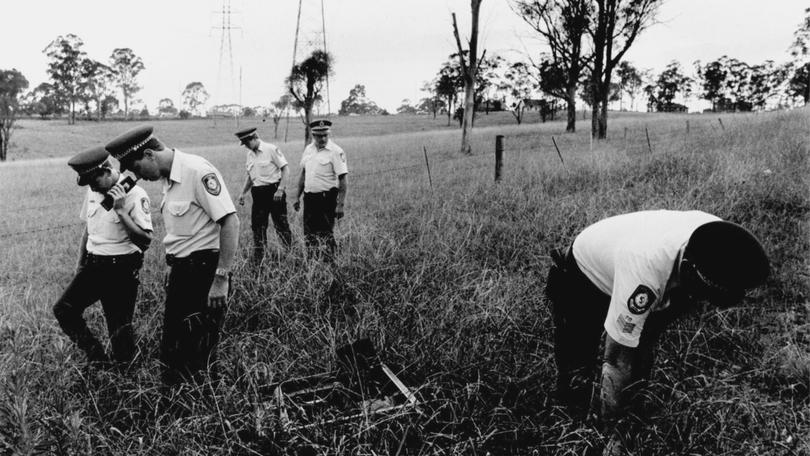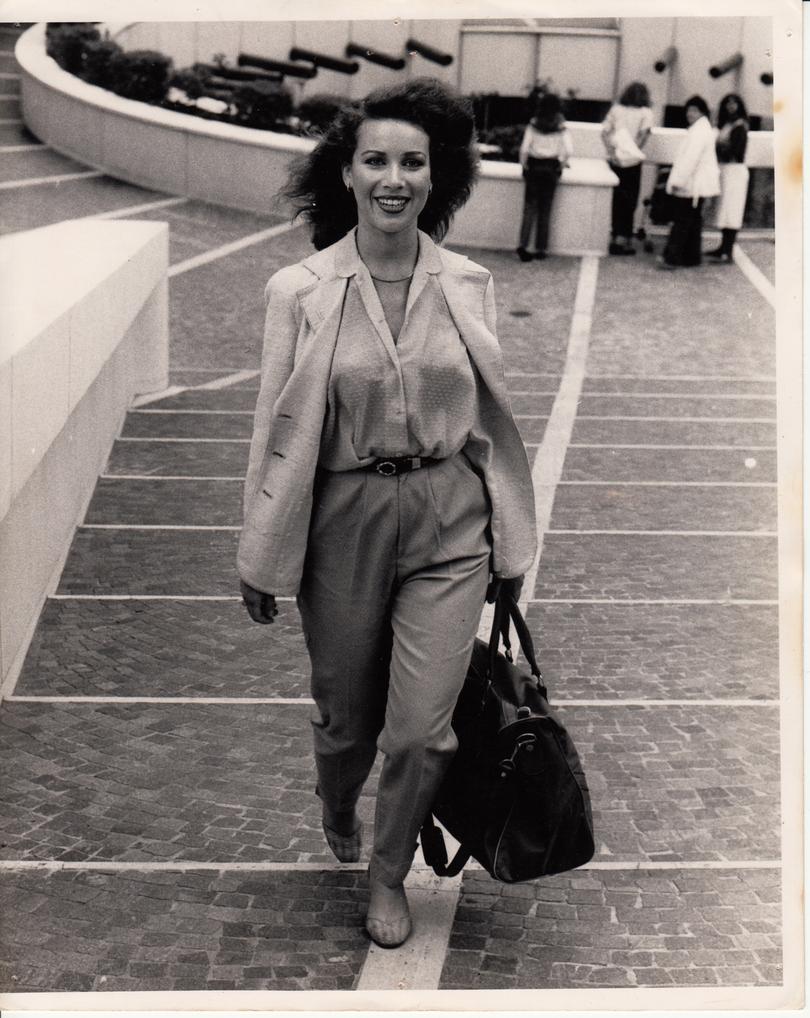Samantha Murphy’s disappearance has a grimly familiar theme in this country

So here we are, on the eve of International Women’s Day, caught up in a terrible story about the loss of another woman, allegedly at the hands of a man.
Australia has been transfixed for a month by the mystery of mum-of-three Samantha Murphy’s whereabouts. She vanished after setting off for a long run through the bush near her home in the regional Victorian city of Ballarat in the early hours of Sunday, February 4.
With news police have charged a 22-year-old Ballarat man with her murder, there is some grim hope for her desperate loved ones that there will be some resolution.
Sign up to The Nightly's newsletters.
Get the first look at the digital newspaper, curated daily stories and breaking headlines delivered to your inbox.
By continuing you agree to our Terms and Privacy Policy.But there is also a sense for many observers - all too familiar with the sight of police scouring Australian bushland for clues to a woman’s fate - that we have seen all this before.
Night and day
I’m a recent running convert and while I’m nowhere near the distances Murphy was covering I understand well the release and unmatched calm a long hit out brings.
In daylight, I blast my ‘good vibes’ playlist loud through my AirPods.
But at night, when the desire for action overrules the simple truth that it’s not safe out there, I run with no music and a key wedged in my knuckles.
Most women I know do this, without giving it a second thought.

As journalists, we aim to uncover touch-points about people that bring them alive for our readers; aspects of their personality and experiences that make them known to us and put us in their circumstances. It’s only human to be drawn to narratives that feel familiar and relatable.
Murphy, who police last month said they presume has been killed, was a 51-year-old mother of three. As a 50-year-old with three kids I have been thinking a lot about what her family must be going through.
I am in no way alone, with the understandable level of public interest in Murphy’s disappearance making it one of the biggest news stories of recent years.
It has obviously touched a nerve in the community — witness either the large turn-out of volunteers joining searches for her or the comments from Victoria’s police chief Shane Patton, who acknowledged “the outpouring of grief in the community”.
He referred to “the feeling of emotion that we have heard right across not just the Ballarat and surrounding area but right across Victoria and indeed across the nation and internationally”, for the Murphy family.
“It was important for me to stand here to express my appreciation to the public, the members of all those communities who persisted,” said Commissioner Patton.
“The information we got from them but as well to the police officers who have been engaged in this and given up many hours of long, long haul days so that I can say to them thank you.”
Murphy’s husband Michael, with whom she worked at the panel beating business the family owns, told reporters on Thursday afternoon he was “relieved” at the development of the arrest.
“The adrenaline with everything that’s been going on, it’s just trying to be brave for everyone,” he said.
“It’s something that we wouldn’t want anyone to experience.”
Part of the fascination with Murphy’s case has been the utter mystery.
As Mr Murphy had said in an emotional press conference alongside the couple’s eldest daughter in the early days of the search: “People don’t just vanish into thin air.” He said police had asked him not to speak further.
The dark reality
But the reality in Australia is that sometimes they do just that.
Bondi schoolgirl Samantha Knight was never found after going missing in the 1980s. Her paedophile killer refused to tell police where her body was.
Sydney model and escort Revelle Balmain was 22 when she vanished from an eastern suburbs hotel in 1994, and Sydney mum Lynette Dawson’s body has never been found despite her former football player husband Chris being jailed for her murder decades later in one of the highest-profile murder trials in recent years.
These cases continue to generate headlines, but beyond them is the stark fact that there are currently 2600 long-term missing across the country, according to the Australian Federal Police.
And speaking of grim statistics, at least 10 women have already died in Australia in 2024 due to violence, after 63 were killed last year, according to a tally kept by online feminist group Destroy the Joint.

All of these killings follow Melbourne’s grim spate of deaths of young women at men’s hands.
Consider Aya Maasarwe and Karen Ristevski in 2019, the stalking and then killing of Eurydice Dixon the year before, and the killing of Masa Vukotic in 2015.
All of this came after the city was similarly shaken by the brutal rape and murder of Jill Meagher, who simply walked out of an inner city bar and never made it home, in 2012. Many in the wake of Meagher’s death hoped for an end to the killing. They simply got more.
True crime inspiration
The first time I told my journalist father that I wanted to follow in much of my family’s footsteps and become a reporter was after the savage killing of Sydney nurse Anita Cobby in 1986.
He and one of his police reporter mates had sat talking in our living room talking about the crime, another story that caught the whole of the country’s attention.
They were used to teenage me hanging around and chuckling darkly about the gruesome details of the prison justice that was being dealt out to the Murphy brothers, three of the five men who killed her and left her battered body in a room at a farm in western Sydney.
I couldn’t sleep that night as I wondered how it was that people so bad had found each other. I wanted more than anything to understand the impulse that drove such evil and to tell the stories of their victims.
“No Sass, don’t do it,” my father said when I told him I wanted to be a journalist. “It will make you hard.”

He wasn’t around to stop me when I joined Sydney’s Telegraph newsroom a few years later, but, in the decades since that warning, its central message has stuck with me.
It was there just months after I started, when as a copy kid, or newsroom assistant, I was asked to gather first one, then a cascading series of files of photographs of missing young backpackers who had vanished from around Sydney.
Our crime reporters were hot on the story of “Backpacker Killer” Ivan Milat’s crimes and the breaking story of Australia’s worst serial killer was the biggest story of 1994.
Behind the big story were dozens of broken hearts, some certainly relieved, but all suffering at the loss of their loved ones.
After all this time, I’m sick of writing about all of these terrible crimes, and I’d bet money you’re sick of reading about them.
But how we feel doesn’t matter. Because if we don’t keep trying to put our hearts into telling these stories — which are predominately about women victims — how can we make Australians pay attention to the darkness that is still out there?

